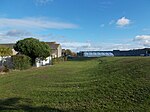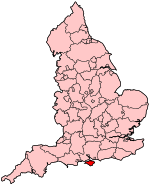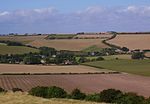Isle of Wight gasification facility
The Isle of Wight gasification facility is a municipal waste treatment plant in southern England. It entered the commissioning phase in autumn 2008, and will be replaced by a new moving grate incinerator in 2019The facility has been funded as part of Defra's New Technologies Demonstrator Programme and is one of the first and only facilities in the United Kingdom to be classed as a gasification system employed for the combustion of refuse derived fuel originating from municipal waste. The plant is operated by Waste Gas Technology UK Ltd, part of the ENER·G group, and utilises the Energos technology; Energos is also part of the ENER·G group. The Energos system was retrofitted into a small conventional incinerator plant and combust an estimated 30,000 tonnes of refuse-derived fuel per year. Originally estimated at £8 million, the retrofit cost £10 million to commission, £2.7 million of which was funded by DEFRA. The plant is sited at Forest Road, Newport.
Excerpt from the Wikipedia article Isle of Wight gasification facility (License: CC BY-SA 3.0, Authors).Isle of Wight gasification facility
Forest Road,
Geographical coordinates (GPS) Address Nearby Places Show on map
Geographical coordinates (GPS)
| Latitude | Longitude |
|---|---|
| N 50.705 ° | E -1.335 ° |
Address
Forest Road
Forest Road
PO30 5QL , Gunville
England, United Kingdom
Open on Google Maps









